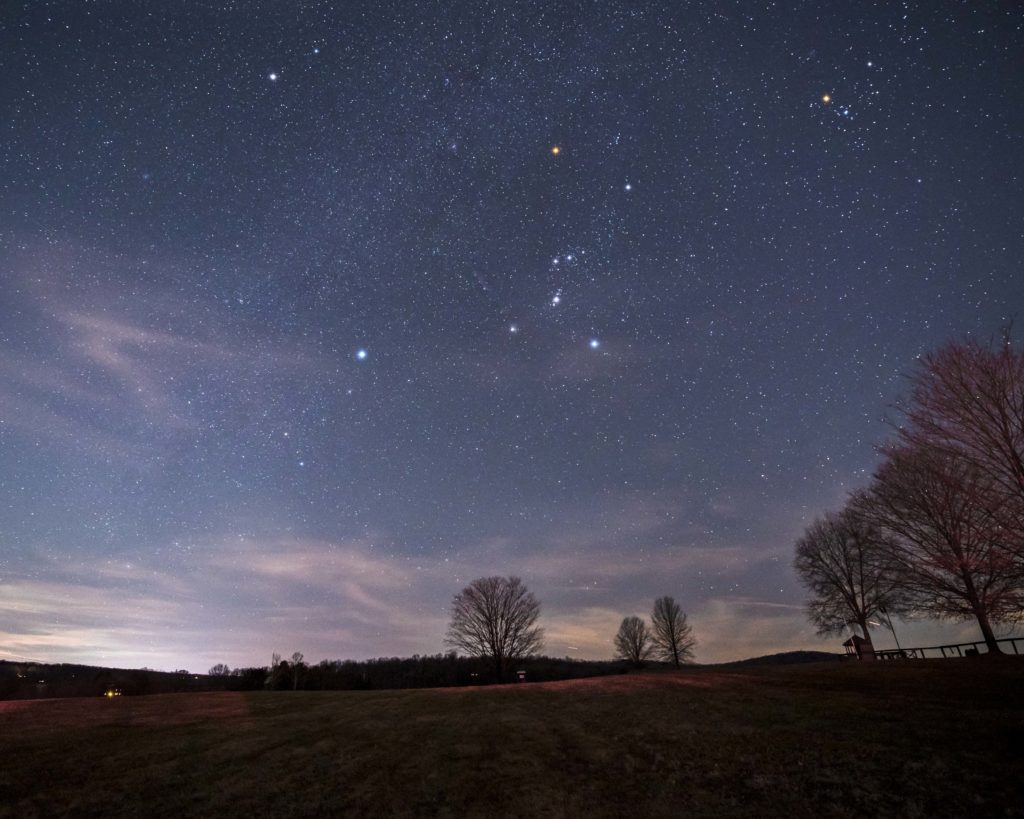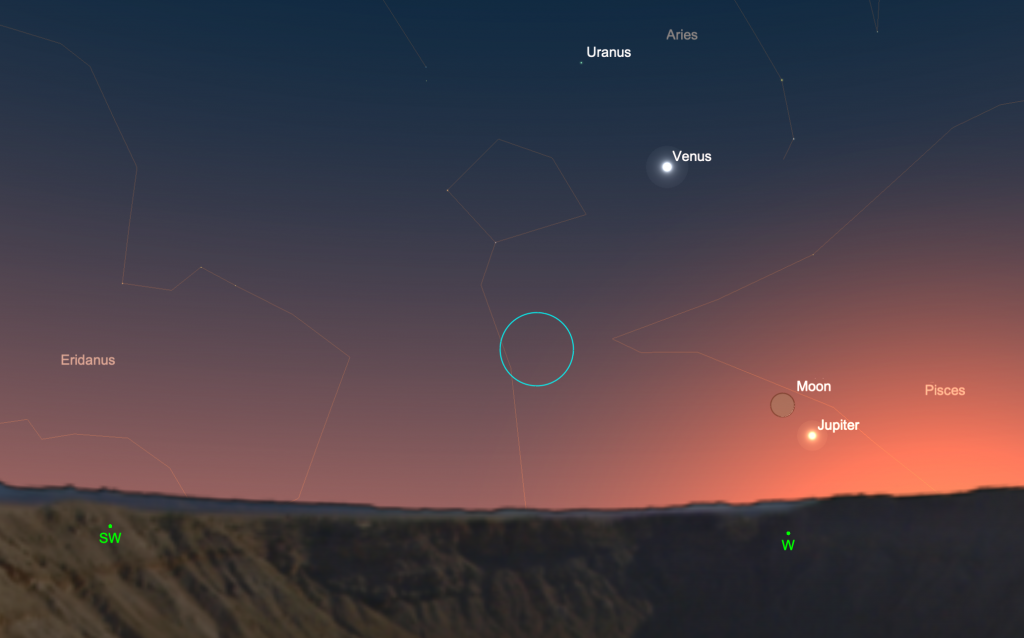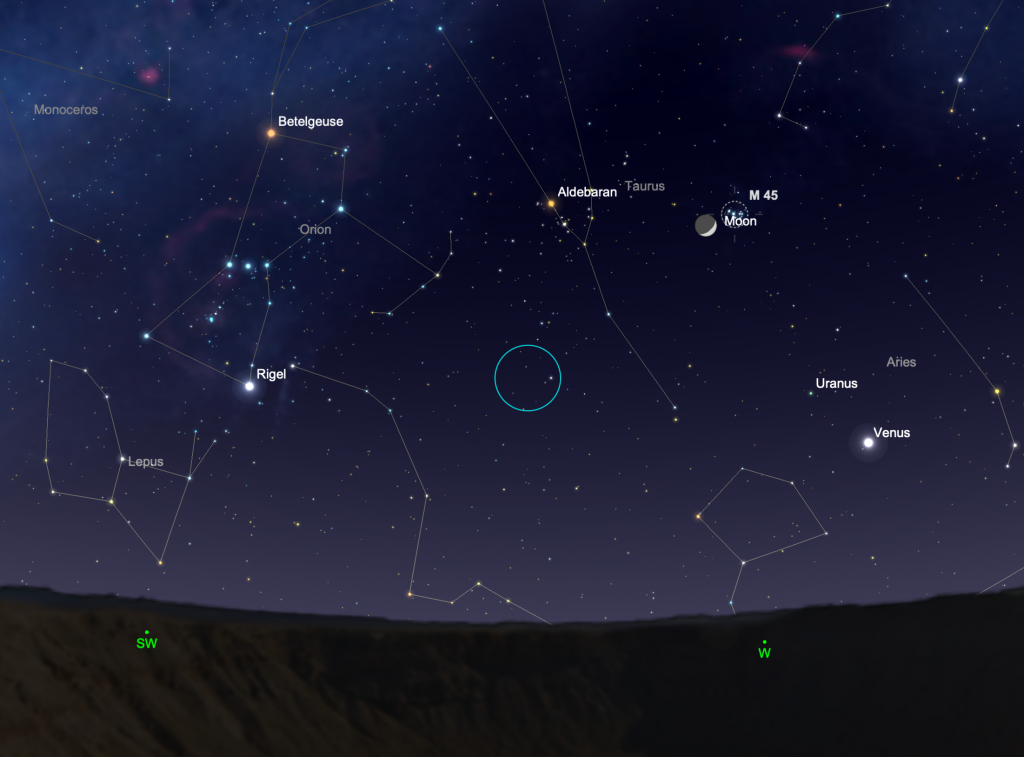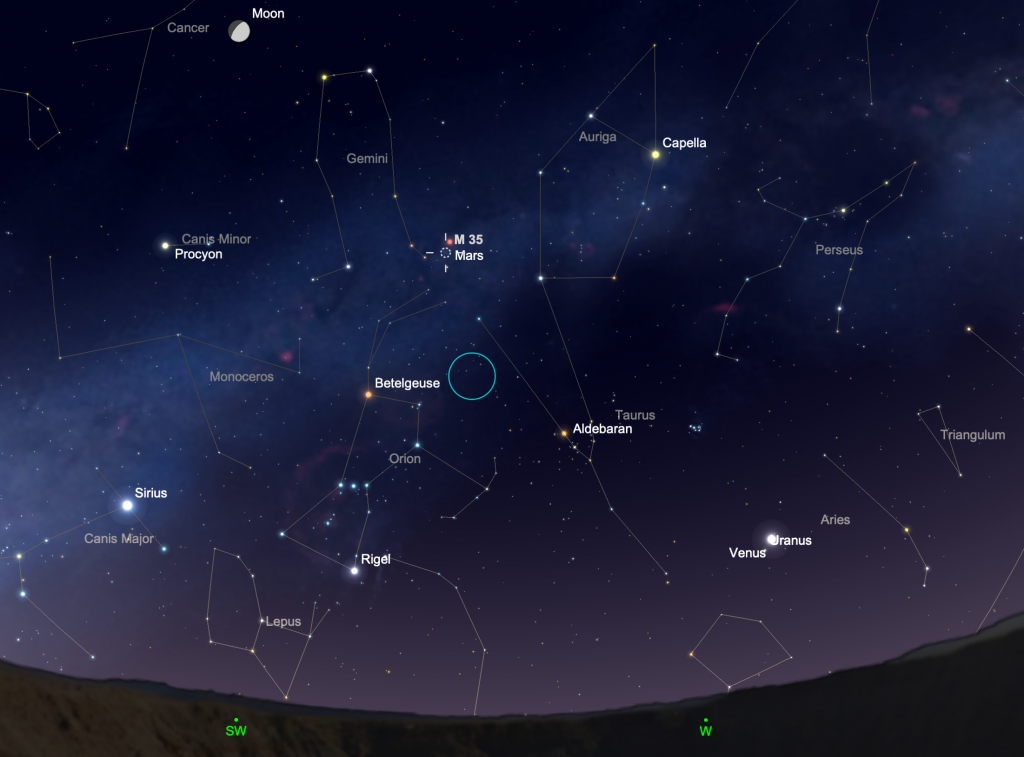
(Looking for last month’s ‘Night Sky’? Find it at this link…)
Venus and Jupiter steal the show with a spectacular conjunction as March gets underway. Venus then moves higher each night and grazes the Moon later in the month and enjoys a conjunction with Uranus as March comes to a close. Jupiter moves sunward for the season and makes a close approach with a thin crescent Moon. And the Sun crosses the celestial equator marking a change of seasons and days and nights of equal length. Here’s what to see in the night sky this month…
1 March 2023. The month begins with a spectacular conjunction of Venus and Jupiter in the western sky after sunset. The two planets lie just half a degree apart and near no bright stars, so you can’t miss them as they emerge in the darkening sky. Brighter Venus, just northwest of Jupiter, shines at magnitude -4.0 and spans 12 arc-seconds. Jupiter, dimmer but larger, shines at magnitude -2.1 with a disk about 34 arc-seconds across. A small telescope with a suitable eyepiece shows both in the same field of view. In the coming days, Jupiter continues its westward motion towards the Sun while Venus moves higher each day until June.
7 March. Full Moon, 12:40 UT
9-23 March. As the Moon moves out of the way in the evening sky, northern observers far from city lights can spot the zodiacal light in the western sky after sunset. This whitish wedge-shaped glow emerges at a steep angle to the western horizon this time of year. It’s caused by sunlight reflected by fine dust grains along the plane of the solar system. The zodiacal light is brightest closer to the Sun, so look for the zodiacal light about half an hour after the end of evening twilight as it extends towards the constellation Taurus.
14 March. Look for the last quarter Moon about 4o east of Antares in the southeastern sky before sunrise.
15 March. Last Quarter Moon, 02:08 UT
20 March. The Sun passes the celestial equator moving north at 20:24 UT. This marks the beginning of spring in the northern hemisphere and autumn in the southern hemisphere.
21 March. New Moon, 17:23 UT

22 March. Jupiter remains in the western evening sky after sunset and this evening lies just half a degree west of an extremely thin 2.4-day-old Moon. With the Moon just over 2% lit, binoculars are all but essential to spot the Moon visually in the twilight. The pair also make a compelling target for imagers. Venus lies about 20° to the northeast, and the thickening crescent Moon passes the planet over the next two days.
23-24 March. Look for brilliant Venus just north of a thin crescent Moon in the western sky after sunset.

25 March. The waxing crescent Moon passes about 2o south of the lovely Pleiades star cluster in the western evening sky. The pair fit nicely into a binocular field of view. The Hyades lie about 10o to the southeast of the Moon, and the brilliant stars of winter fill the western and southwestern sky as they take a final bow before giving way to the stars of spring to the east.
28 March. Look for Mars about 2o south of the nearly first-quarter Moon.
29 March. First Quarter Moon, 02:32 UT
30 March. Mars lies about 1.2o north of the star cluster Messier 35 at the foot of the constellation Gemini in the western sky after sunset.

31 March. Venus continues to light the western evening sky and tonight lies about 1.3o north of far fainter Uranus. The distant ice giant is quickly moving towards the Sun on its way to conjunction in May, so this may be the last chance to see it before it reappears later this year. At magnitude -4.0. Venus outshines everything else in the night sky except for the Moon. Uranus, usually an easy object in binoculars, presents more of a challenge to visual observers as its tiny 3.4 arc-second wide disk is difficult to see in the twilight. The planet shines at magnitude 5.8, about 8,000 times fainter than Venus! Both planets fit in the same field of view of a telescope at low magnification.